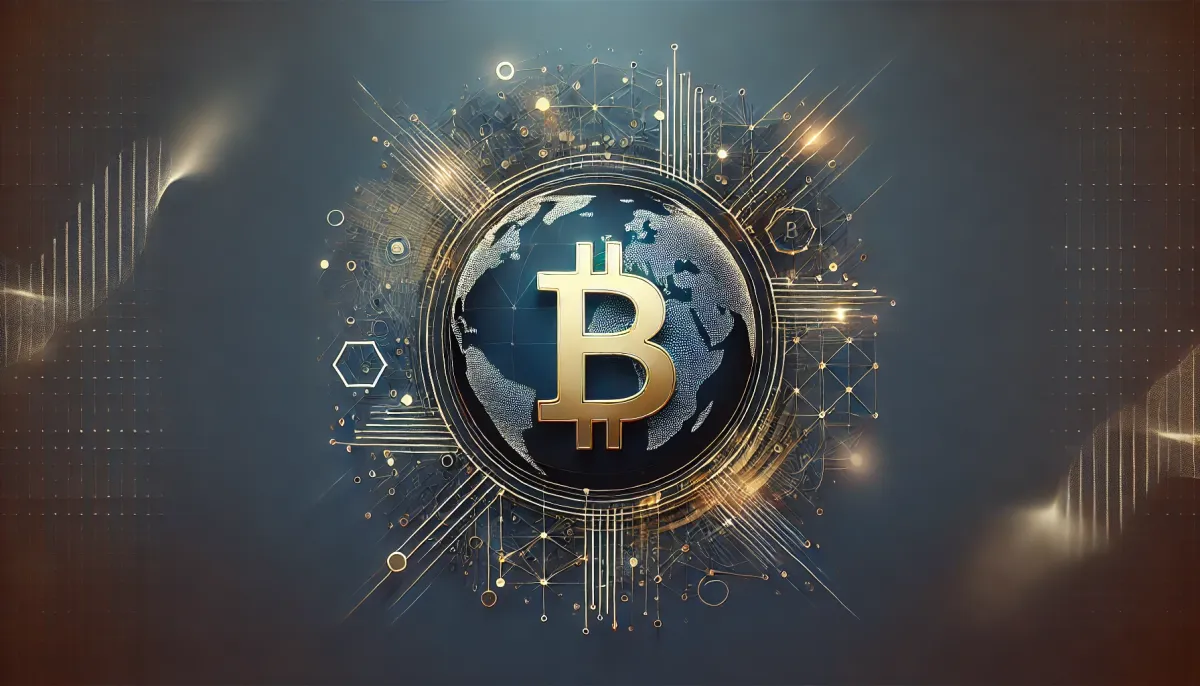The Rise of Stablecoins: A Game-Changer in Global Finance
The October 20, 2024 episode of the Wolf of All Streets podcast features Jeremy Allaire outlininghow stablecoins have become a critical app for blockchain adoption, particularly in cross-border transactions and as an electronic money alternative.

- My 'short take' notes summarize the content of podcast episodes; they do not necessarily reflect my own views.
- They contain (1) a summary of podcast content and (2) some speculative views on wider implications.
- Pay attention to broadcast dates (I often summarize older episodes)
- Some episodes I summarize may be sponsored: don't trust, verify, if the information you are looking for is to be used for decision-making.
Summary
The October 20, 2024 episode of the Wolf of All Streets podcast explores the growing impact of stablecoins, especially USDC, in global markets. Jeremy Allaire discusses regulatory advancements, expanding use cases beyond speculation, and how AI could reshape economic interactions through blockchain-based smart contracts. Legal clarity and technological innovation are critical for stablecoin adoption and future financial infrastructure.
Take-Home Messages
- Stablecoins are becoming legally recognized as electronic money, unlocking broader adoption in financial markets.
- USDC’s regulatory compliance in the European Union sets a precedent for stablecoin usage in global finance.
- AI-driven economic transactions using blockchain may soon disrupt traditional financial systems.
- Dollar dominance continues to drive stablecoin growth, with other currencies gaining traction as regulatory clarity improves.
- Simplified blockchain user experiences are essential to mainstreaming stablecoin adoption beyond speculative markets.
Overview
The October 20, 2024 episode of the Wolf of All Streets podcast delves into why stablecoins are viewed as the "killer app" for crypto. Jeremy Allaire, CEO of Circle, highlights how stablecoins like USDC have become integral to global financial infrastructure, enabling cross-border payments and corporate treasury management. Regulatory clarity is crucial for their widespread adoption, with regions like the European Union leading the way with legal frameworks such as MiCA.
The dominance of dollar-backed stablecoins is explained by the U.S. dollar’s global network effects. Allaire points out that while stablecoins tied to other currencies will grow, the dollar remains the strongest due to its liquidity and use in capital markets. Beyond financial speculation, stablecoins are also being adopted in sectors like trade finance, remote worker payments, and emerging markets.
The conversation concludes with a discussion about how AI-driven automation will reshape global finance. Allaire envisions a world where AI agents generate blockchain-based contracts, accelerating economic transactions and making stablecoins the base layer of this new digital economy.
Broadcast Highlights
- Legal Recognition of Stablecoins: MiCA in the EU allows stablecoins like USDC to be treated as legal electronic money.
- USDC Compliance in the EU: Circle is the first issuer to be fully compliant with EU stablecoin regulations.
- Dollar-Backed Stablecoins’ Dominance: The U.S. dollar’s global strength is reflected in the dominance of dollar-backed stablecoins.
- Expanding Use Cases: Beyond speculation, stablecoins are being used for cross-border payments and treasury management.
- AI-Driven Transactions: AI agents will generate smart contracts, making blockchain-based financial systems more efficient.
- Seamless User Experience: Simplifying blockchain interactions is key to mass adoption.
- Emerging Markets: Stablecoins are enabling financial inclusion and cross-border transactions in developing economies.
- Stablecoin Competition: More competitors are entering the stablecoin market, leading to a maturing ecosystem.
- Future of Financial Intermediation: Stablecoins and AI could soon redefine global financial infrastructure.
- U.S. Regulatory Lag: The U.S. is falling behind in stablecoin regulation, creating uncertainty for issuers and users.
Implications
The broader use of stablecoins as legally recognized electronic money could transform global financial systems, offering secure, compliant alternatives to traditional payment systems. Regulatory clarity will drive adoption by major financial institutions, enabling stablecoins to be used in treasury management, cross-border payments, and trade finance. As AI-generated smart contracts become more prevalent, stablecoins could underpin automated economic transactions, potentially reducing costs and increasing transaction speeds.
Future Outlook
Stablecoins are poised to capture a larger share of global financial transactions as regulatory frameworks mature, particularly in the European Union and emerging markets. The intersection of AI and blockchain technology will likely accelerate this adoption, transforming how financial systems operate. With greater clarity and technological innovation, stablecoins could soon become the backbone of global finance.
Broader Implications
Regulatory Evolution
As more jurisdictions adopt stablecoin laws, stablecoins like USDC could gain recognition as legal tender, enabling widespread integration into corporate and financial operations. The evolution of these regulations will likely fuel Bitcoin’s role in decentralized finance by providing more clarity and security for institutional investors.
AI and Blockchain Synergy
AI-driven smart contracts could become foundational to Bitcoin and blockchain networks, enabling automated, secure economic interactions. This integration could create new opportunities for decentralized finance, making Bitcoin a key player in the next wave of AI-powered financial systems.
Financial Inclusion
Stablecoins, when coupled with Bitcoin’s decentralized framework, could enhance financial inclusion in developing economies by offering a secure store of value and an alternative to volatile local currencies. This shift may provide Bitcoin with a stronger foothold in emerging markets, accelerating its global adoption.
Cross-Border Payments
Bitcoin’s potential for cross-border payments may be enhanced by the global adoption of stablecoins like USDC, which offer a stable intermediary currency. This could position Bitcoin as a critical tool in global financial systems, reducing reliance on traditional banking infrastructure for international transfers.
Institutional Adoption
With regulatory clarity increasing globally, stablecoins will serve as a bridge for institutional investors into the Bitcoin ecosystem, as they offer a secure, compliant gateway to blockchain-based financial systems. This could encourage greater institutional investment in Bitcoin, boosting its market role.



Comments ()